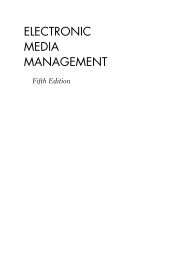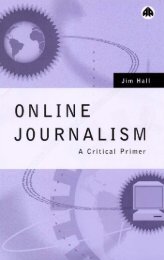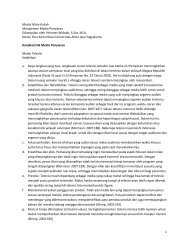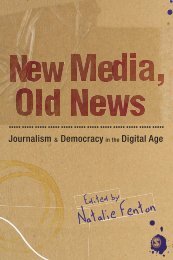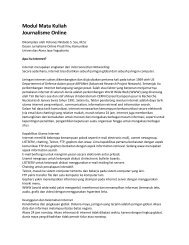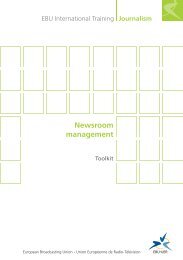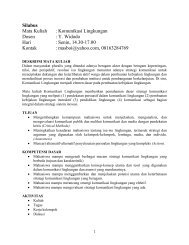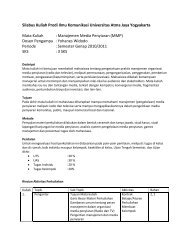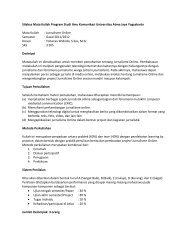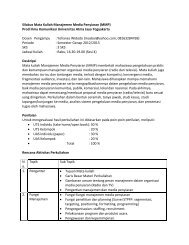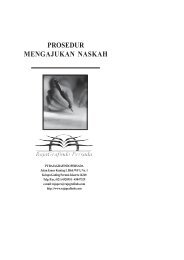1What is online journalism? - Ayo Menulis FISIP UAJY
1What is online journalism? - Ayo Menulis FISIP UAJY
1What is online journalism? - Ayo Menulis FISIP UAJY
Create successful ePaper yourself
Turn your PDF publications into a flip-book with our unique Google optimized e-Paper software.
62 Journal<strong>is</strong>m Online<br />
editing an extract for transm<strong>is</strong>sion (getting an audio ‘cut’ or<br />
‘clip’) then d<strong>is</strong>carding the rest; and<br />
editing extracts to be d<strong>is</strong>carded and transmitting the remainder<br />
(usually a full interview).<br />
Each of these approaches has its own additional rules, some of<br />
which can apply to either category. If that sounds imprec<strong>is</strong>e, it <strong>is</strong>.<br />
Editing <strong>is</strong> a combination of editorial judgement and technical skill;<br />
it <strong>is</strong> not an exact science.<br />
When editing for cuts or clips, try to choose a cut where the<br />
interviewee <strong>is</strong> fluent, yet conc<strong>is</strong>e and direct (not always easy) and<br />
where he or she tackles one of the main <strong>is</strong>sues or clearly explains<br />
h<strong>is</strong> or her position on the <strong>is</strong>sue. Avoid summarizing statements.<br />
Although politicians love these soundbites, they often appear<br />
contrived and stale.<br />
On no account should you collude in th<strong>is</strong> sterile exerc<strong>is</strong>e by<br />
asking the interviewee to ‘give a 20-second clip on th<strong>is</strong>’ in place of<br />
a proper interview. In addition, you should avoid cuts that just l<strong>is</strong>t<br />
facts. These can be marshalled more conc<strong>is</strong>ely in your supporting<br />
text. When taking a quick clip, it <strong>is</strong> tempting to fin<strong>is</strong>h the edit midsentence.<br />
Th<strong>is</strong> <strong>is</strong> acceptable if it does not break a Golden Rule. Do<br />
not make the edit on a r<strong>is</strong>ing inflection in the voice, as it sounds<br />
unnatural.<br />
When editing interviews, be bold. Do not get hung up with<br />
taking out every pause and hesitation. They are part of natural<br />
speech. Indeed, a pause indicating emotion, thought, indec<strong>is</strong>ion or<br />
ignorance should never be taken out. Instead, concentrate on<br />
removing the sentences or whole answers you do not want.<br />
Rather than cutting from the bottom up (like a newspaper subeditor),<br />
try to cut from within the piece to improve the flow and<br />
structure but without altering the sense. Note the rhythm of the<br />
speech. Leave breathing spaces both within and at the end of<br />
sentences. Otherw<strong>is</strong>e you get ‘tight edits’ (words butted too close<br />
together). Remove any reference to material you have already<br />
edited (‘as I said earlier’) and anything that <strong>is</strong> inaudible (do not<br />
l<strong>is</strong>ten too often on headphones or you will convince yourself that<br />
something of borderline quality <strong>is</strong> acceptable – it may not be when<br />
transmitted).



